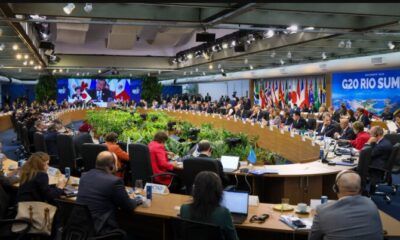The book “Identity Crisis,” an analysis of the 2016 election by Sides, Lynn Vavreck, a political scientist at U.C.L.A., and Michael Tesler, a political scientist at the University of California-Irvine, documents President Barack Obama’s success in recruiting enough white voters to win twice, a group that proved highly problematic for Hillary Clinton.
A 2011 pre-election survey that Vavreck and her co-authors cite shows that a third of white voters who backed Obama believed “illegal immigrants are mostly a drain on society,” while slightly higher percentages held unfavorable views of Muslims and endorsed making it harder to immigrate.
In the 2008 election, the three authors found, whites who rated immigrants the most unfavorably voted for John McCain over Obama by 25 percentage points. In 2016, whites who held the same disparaging view of immigrants voted for Trump over Clinton by 65 points.
Could Trump successfully win re-election by expanding on his divisive 2016 strategy? Two Democratic strategists at the liberal Center for American Progress concede that he could.
In their analysis, “The Path to 270 in 2020,” Ruy Teixeira and John Halpin, senior fellows as the center, write that Trump
continues to hold fiery rallies in traditionally white noncollege areas in places such as North Carolina and Michigan, stressing his message of cultural conflict over race and immigration, nationalist economics and perceived excesses of the Democratic left.
At the same time, Teixeira and Halpin write, Trump
has tried to reach out, even if just slightly, to more conservative-leaning African-American, Hispanic, and Asian voters while also trying to reassure more traditional white college-educated Republicans that he is the only thing standing between them and the coming onslaught of what Republicans label the ‘socialist’ policies of Democrats.
Teixeira and Halpin ask whether this will work. Their answer:
Given the skew of the Electoral College, it’s a distinct possibility. Although seemingly incongruous, the combined effect of these twin Trump strategies may be enough to increase his vote margins and turnout among base voters while also slicing Democratic margins or turnout just enough to eke out another electoral victory.
Brian Schaffner, a political scientist at Tufts, and Laurel Bliss, a research assistant, looked at the liberalism of Democratic activists from a different angle, comparing the views of Democrats who regularly post on Twitter with those who do not.
The study, “Not all Democratic primary voters are as ‘woke’ as your Twitter feed,” was prompted in part by former President Obama’s November address to the Democracy Alliance, a group of major Democratic donors and liberal organization leaders in Washington, warning that many voters crucial for victory on Election Day do not share the views of “certain left-leaning Twitter feeds” or “the activist wing of our party.”

 Entertainment1 week ago
Entertainment1 week ago
 Tech4 days ago
Tech4 days ago
 Tech4 days ago
Tech4 days ago
 General News2 days ago
General News2 days ago
 Business News1 day ago
Business News1 day ago
 Jobs1 day ago
Jobs1 day ago
 General News2 days ago
General News2 days ago
 Business News1 day ago
Business News1 day ago

